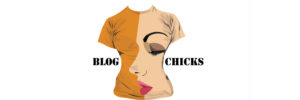Adelaide last weekend was a city on steroids. Art in all its forms (does Clipsal V8 car racing qualify?) was colliding at every intersection. The Festival and everything else was opening and happening. So much going on in one small city and, aside from the car racing thing, so many great things to see and do. It was only the locals feeling the strain.
On arriving we did what we always do – eat. Art appreciation is best done on a full stomach. Lunch was at Chianti Classico: classico by name and so beautifully classico by nature www.chianticlassico.com.au We lament there is nothing like it in Sydney, so we made the most of it. Only then were we ready to face the demands of an intensive few days of art.
Guest curators Natasha Bullock and Alexie Glass-Kantor have brought together an impressive group of artists who work across many art forms: sculpture, installation, video, photography, painting, drawing, weaving and music. The premis (in a nutshell as opposed to the expanded weighty tome which accompanies the exhibition) is that ideas and materials can co-exist ie run parallel, as well as across one another though in another dimension, ie time. A reasonable hypothesis but, to be honest, I did get a bit lost in the artspeak. Nonetheless I enjoyed engaging at my own pace with the exhibition. The artworks were great, with the interplay between them and the ideas resulting from all that are memorable. For me this is what makes an exhibition sing – bringing artworks together under a certain guise and allowing them to speak to one another, to bring about new or extended meanings.
It is important to begin in the old wing of the Gallery with the old colonial collection, funnily enough, before heading downstairs to the contemporary wing. Several exhibiting artists had been invited to play with these rooms and works, and then continue with related artworks downstairs. The conservative stuffy colonial wing had been jolted awake, not just with a fresh coat of paint, but with a rejigged and potent political and cultural rethink.
Rosemary Laing was keen to work in the room with ‘her Glover’ – she knew the work, the space and placed one of her fabulous Groundspeed works opposite the Glover, A view of the artist’s house and garden, in Mills Plains, Van Diemen’s Land. Both artists consider notions of human influence in a landscape, that of formal gardens and introduced plants placed within the wilds of nature, but one work is from 1835, the other 2001.
 |
| Nicholas Folland Untitled (jump up) 2012 found crystal & glassware, nylon coated steel wire & timber Courtesy the artist & Ryan Renshaw Gallery, Brisbane |
Nicholas Folland suspended 2,000 glass vessels from yesteryear with such precision – cruet sets, saucers, gravy dishes, nut bowls, punch cups & more – they formed a floating mountainous island. More the dowdy glass of suburban Australia than anything unique from colonial times, this work spoke of adventures in another time to another place – alluding to explorers and pioneers of another era. Magical and wondrous.
Jonathon Jones‘ work is so layered and so subtle in its rendering, it sits quietly waiting to be discovered. I think his piece, ironically, is key to understanding the curatorial proposition; ironic because it is not a new work, rather a new installation of existing, old works. Jones rehung in a discreet alcove many old works on paper from the Gallery’s collection that depicted the Murray- Darling River systems & its tributaries. It is this river system which connects the Wiradjuri & Kamilaroi Aboriginal groups, which are Jonathon’s heritage and which hold particular significance to these two groups. Effectively he was mapping his own heritage across a specific area, but as depicted in older colonial pictures. He uses the works from another time and another culture to introduce his forebears and their connections to the same landscape.
To look and think this through, you must sit on the beautiful asymmetrical wooden bench, akin to a solid canoe, sited in the alcove, and made at The Jam Factory in Adelaide from a Murray River gum to Jonathon’s specifications. Beautiful. Concept, production and installation completes a circle into which we are invited to pause and reflect.www.jamfactory.com.au
 |
| Rosemary Laing Jim from the leak series 2010 type C photograph image courtesy of the artist and Tolarno Galleries, Melbourne |
There is so much more to talk about, but I’ll just focus on one room which I thought was particularly beautiful. This room, I think, presents a reconsideration of how we position ourselves in an Australian landscape. Picture these hung together: a woven circular reed mat by Yvonne Koolmatrie – the reeds from the Murray, smelling of grass; a felled cut-up gum tree from the banks of the Murray, which was painted with ceremonial white ochre, lain dramatically across the floor and lit from underneath by fluoros by Jonathon Jones; 2 expansive landscape photographs by Rosemary Laing, of wooden frames of buildings (probably houses) built into the trees, like ships aground, left to weather and rot and become one with the land. Images of Australian landscapes are so deeply ingrained in us, they have shaped our sense of place in all its forms. Bringing these works together (with the installation by Tom Nicholson – an upstairs/ downstairs multi-faceted piece) reflects on the past by offering up a contemporary perspective. It felt like moving through a gracious magnificent Aussie landscape, recognising the many inhabitants, past and present.
A couple of other works which I must mention: Ricky Swallow‘s new small bronzes reference early modernist sculpture. Bronze is the most extraordinary medium, and with the patina (the surface finish) his pieces looked like the original cardboard constructions – kitchen paper and toilet rolls,sides of boxes: the fibrous softness of cardboard was so honestly captured in bronze.
My favourite video artist Daniel Crooks created a new piece set around the laneways of Melbourne. Slices of laneways pieced together, like viewing sets on a stage from the wings; people emerging and wandering through each lane dissolved into the edges. It captures slices of time and space in the inner city. And another fabulous video (though they are all digital these days) by Shaun Gladwell who was filmed from underwater, sitting on a surfboard in a weighted wetsuit upside down, also under water. Obviously an arduous thing to do and at times the weight and pull of the water felt oppressive. But generally it was a peaceful, meditative work – with ambiguous light sources, gentle rolling surf and soft blue water – in which there was no real up or down, just floating and being.
 |
| Tim Silver Untitled (object) 2011 – 2012 cedar timbermate woodfiller courtesy of the artist and BREENspace Sydney |
A full body cast of artist Tim Silver, lying seemingly asleep, became a poignant self-portrait. Cast from Selley’s wood filler, the model was then deep frozen. Now on display, he will slowly thaw out, almost melt, dry out and crack. By the end of the exhibition, the body will be almost non existent. We are witnessing youthfulness in decay.
We saw so much, too much for this wee blog, that here now are some websites to check out: see curator Victoria Lynn‘s international exhibition Restless www.unisa.edu.au/samstagmuseum; a collaborative exhibition of Richard Lewer and Tony Garifalakis www.hugomichelgallery.com; Deadly at Tandanya National Aboriginal Cultural Institute www.tandanya.com.au and UK based Matt Collishaw at Greenaway Gallery www.greenaway.com.au. Visceral rotting decay is the subject of a photographic and video exhibition by Collishaw, one of the original YBA(Young British Artist with Damien Hirst & Tracey Emin). He shows a depth and maturity which, I believe at times, his compatriots now lack.


No Comments Yet